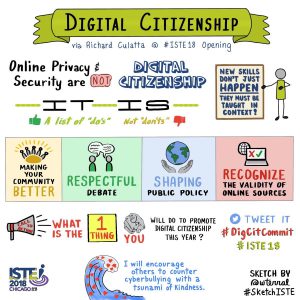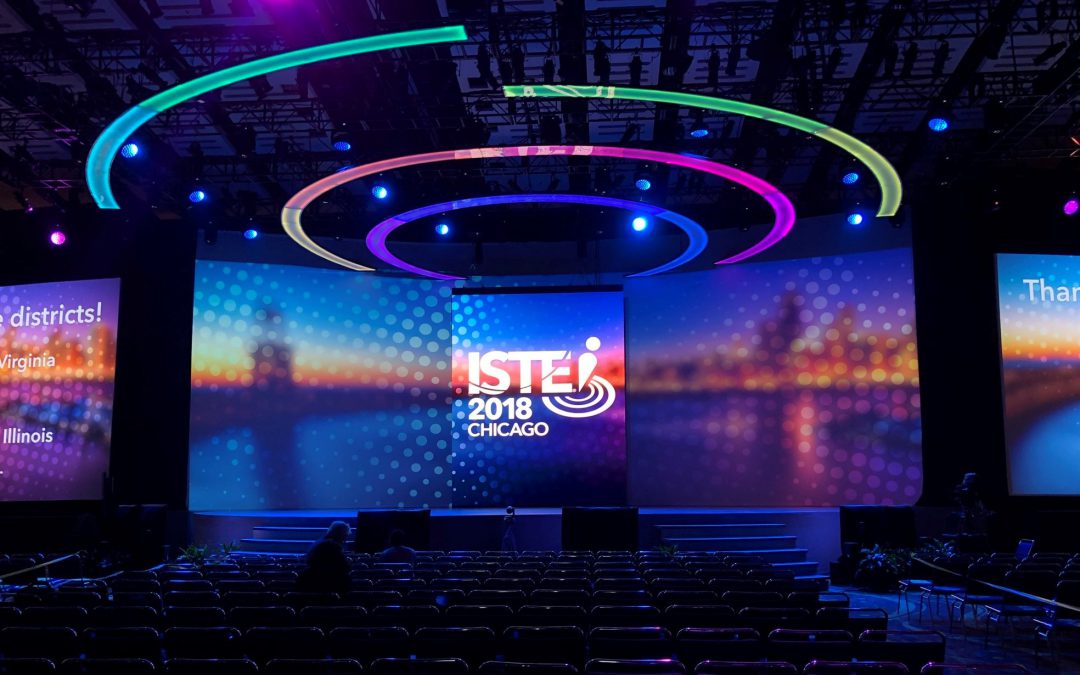ISTE (the International Society for Technology in Education) is an organization whose vision is “…that all educators are empowered to harness technology to accelerate innovation in teaching and learning, and inspire learners to reach their greatest potential.” Through their membership, standards, and professional development opportunities such as ISTE U, educators are equipped with a remarkable set of tools for effective use of technology in the classroom.
ISTE also holds an annual conference each year. This 4-day experience is jam-packed with highly acclaimed keynote speakers, a massive vendor area, tons of networking opportunities, breakout learning sessions, and more. In a nutshell: if edtech is your thing, this is the event for you. And that’s exactly why we sent one of our Business Analysts—Daniel Montelione—and our Trainer—Susan Martin—to Chicago this year’s ISTE18. We wanted to hear more about the key takeaways they garnered from their immersion in edtech awesomeness so that we can continue to improve the ProgressBook Suite while keeping a finger on the pulse of this ever-changing world.
One thing Dan and Susan both learned from ISTE18 is that there are a lot of very powerful data analytics tools in the market today. On the flip side, Dan pointed out how it seemed a lot of companies are moving away from solely big-data collection. The focus now seems to be on taking that mass collection and manipulating it to meet the needs of the users. “Companies are taking those next steps where they’re trying to figure out what’s useful and what their customers and users actually care about. How can they use it for instruction, predictive analysis, etc.? What do we do with this data now that we have it?” says Dan. Of course, we at ProgressBook absolutely love hearing this as it is precisely why we created DataMap.
But perhaps one of the most significant takeaways was from a main theme of the con ference, and that was the concept of Digital Citizenship for students. There were many sessions dedicated to the message that children need to be hyper aware, conscientious internet users, a message we couldn’t agree with more. But ISTE wasn’t only championing this great cause. Student engagement was also a primary focus of a lot of the sessions and presentations. “It wasn’t just an edtech conference,” said Susan. “It was about students figuring out why we do this, and students asking ‘Why are we using this tool?’” Susan also mentioned that many of the sessions and vendors were geared towards students creating content and asking big-picture questions rather than simply being presented with the data.
ference, and that was the concept of Digital Citizenship for students. There were many sessions dedicated to the message that children need to be hyper aware, conscientious internet users, a message we couldn’t agree with more. But ISTE wasn’t only championing this great cause. Student engagement was also a primary focus of a lot of the sessions and presentations. “It wasn’t just an edtech conference,” said Susan. “It was about students figuring out why we do this, and students asking ‘Why are we using this tool?’” Susan also mentioned that many of the sessions and vendors were geared towards students creating content and asking big-picture questions rather than simply being presented with the data.
To go along with that, both Dan and Susan pointed out that VR and AR (virtual reality and augmented reality, respectively) are on an incredible rise, which excited both of them. With devices such as the Merge Cube and platforms such as Co-Spaces, students aren’t just experiencing certain environments and participating in virtual 3D lessons: they’re actually creating them by using the now growing field of VR/AR applications and devices.
With all of these new, interesting, and incredible advances being made in edtech, we can’t wait to see what’s in store for ISTE19… and for the world of technology in education.

